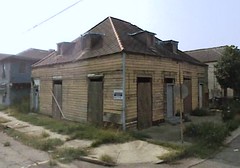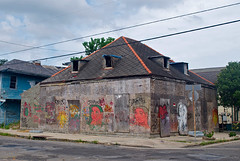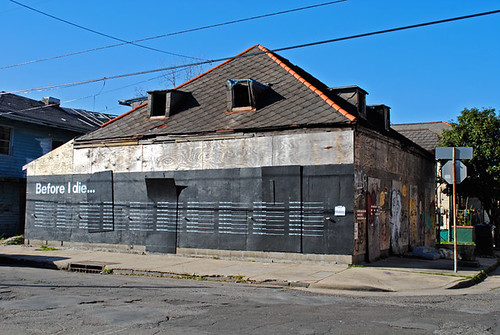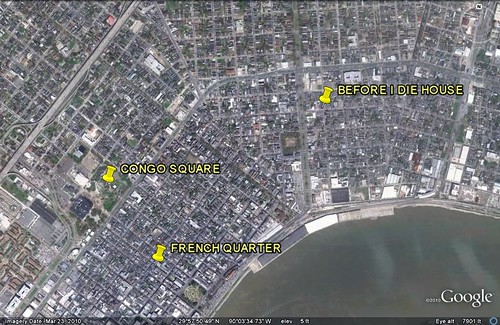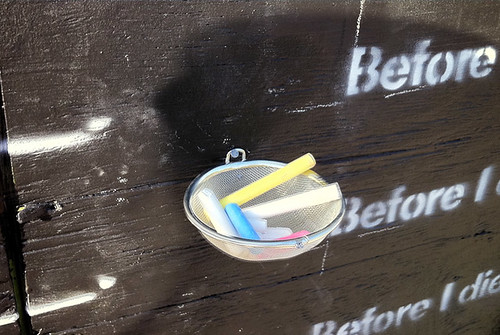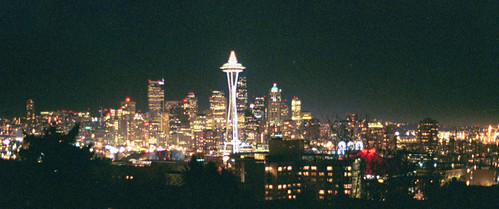
For a long time, America’s environmental community celebrated
wilderness and the rural landscape while disdaining cities and towns.
Thoreau’s Walden Pond and John Muir’s Yosemite Valley were seen as the
ideal, while cities were seen as sources of dirt and pollution,
something to get away from. If environmentalists were involved with
cities at all, it was likely to be in efforts to oppose development,
with the effect of making our built environment more spread out, and
less urban.
We’ve come a long way since then, if still not far enough. We were
and remain right to uphold nature, wildlife and the rural landscape as
places critical to celebrate and preserve. But what we realize now,
many of us anyway, is that cities and towns – the communities where for
millennia people have aggregated in search of more efficient commerce
and sharing of resources and social networks – are really the
environmental solution, not the problem: the best way to save
wilderness is through strong, compact, beautiful communities that are
more, not less,

urban
and do not encroach on places of significant natural value. As my
friend who works long and hard for a wildlife advocacy organization puts
it, to save wildlife habitat we need people to stay in “people
habitat.”
For our cities and towns to function as successful people habitat, they must be communities where people
want
to live, work and play. We must make them great, but always within a
decidedly urban, nonsprawling form. As it turns out, compact living –
in communities of streets, homes, shops, workplaces, schools and the
like assembled at a walkable scale – not only helps to save the
landscape; it also reduces pollution and consumption of resources. We
don’t drive as far or as often; we share infrastructure. While recent
authors such as
Edward Glaeser and
David Owen
are sometimes excessive in extolling the virtues of urban density
without giving attention to the other things that make cities attractive
and successful, they are absolutely right that city living reduces
energy consumption, carbon emissions and other environmental impacts.
A lot of my professional friends are committed urbanists as well as
committed environmentalists. We understand the environmental advantages
of urban living so thoroughly that we take it for granted that other
people do, too. But we make that mistake at our – and the planet’s –
peril. The increased development and maintenance of strong, sustainable
cities and towns will not happen without a concerted effort.
A lot is riding on the outcome: 83 percent of America’s population –
some 259 million people – live in cities and their surrounding
metropolitan areas. Somewhat astoundingly (and as I
have written previously),

37
of the world’s 100 largest economies are US metros. New York, for
example, ranks 13th, with a $1.8 trillion economy equivalent to that of
Switzerland and the Netherlands combined; Los Angeles (18th) has an
economy that is bigger than Turkey’s; Chicago’s (21st) is larger than
Switzerland’s, Poland’s or Belgium’s.
With so much population and economic activity, it can be no wonder
that our working and living patterns in cities and suburbs have enormous
environmental consequences, both for community residents and for the
planet. And the implications are going to intensify: over the next 25
years, America’s population will increase by 70 million people and 50
million households, the equivalent of adding France or Germany to the
US. With a combination of building new homes, workplaces, shops and
schools and replacing those that will reach the end of their functional
lives, fully half the built environment that we will have on the ground
in 25 years does not now exist.
These circumstances provide not just a formidable challenge but also a
tremendous opportunity to get things right. Unfortunately, past
practices have done a lot of damage, particularly in the latter half of
the 20th century, when America severely disinvested our inner cities and
traditional towns while population, investment and tax base fled for
(quite literally) greener pastures. The result, as we now know all too
well, has been desecration of the natural and rural landscape while
leaving behind decaying infrastructure, polluted air and waterways, and
distressed populations.
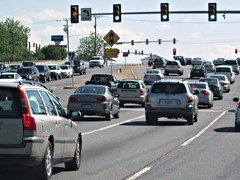

Older cities and towns with shrinking revenues did what they could,
but critical issues such as waste, public transportation, street and
sidewalk maintenance, parks, libraries, and neighborhood schools –
issues where attention and investment could have made a difference –
were back-burnered or neglected altogether. Meanwhile, sprawl caused
driving rates to grow three times faster than population, sending carbon
and other emissions through the roof while requiring still more costly
new infrastructure that was built while we neglected the old.
We cannot allow the future to mimic the recent past. We need our
inner cities and traditional communities to absorb as much of our
anticipated growth as possible, to keep the impacts per increment of
growth as low as possible. And, to do that, we need cities to be
brought back to life, with great neighborhoods and complete streets,
with walkability and well-functioning public transit, with clean parks
and rivers, with air that is safe to breathe and water that is safe to
drink.


This, I believe, leads to some imperatives: where cities have been
disinvested, we must rebuild them; where populations have been
neglected, we must provide them with opportunity; where suburbs have
been allowed to sprawl nonsensically, we must retrofit them and make
them better. These are not just economic and social matters: these are
environmental issues, every bit as deserving of the environmental
community’s attention as the preservation of nature.
This is the first in a series of posts that will introduce NRDC’s agenda for sustainable communities.
Implementing sustainable practices on key urban issues
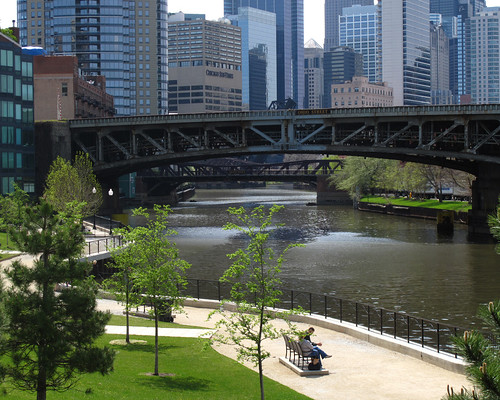
NRDC’s work for sustainable communities
at the neighborhood scale and
on regional planning
is designed to address multiple environmental issues simultaneously.
But, at the same time, moving toward sustainability requires work on
selected individual issues in a focused way, bringing significant
resources to bear on a limited number of key challenges faced by
American cities. At NRDC, we approach the task by taking advantage of
the opportunities and experience our staff enjoys in America’s largest
cities: New York, Los Angeles, and Chicago, where we have offices, and
Philadelphia.
In particular, for four decades, NRDC has used our strengths in
policy development and advocacy to advance environmental initiatives in
the greater New York City region and to create models of sustainability
that can be replicated in other urban areas. We have done the same for
over two decades in Los Angeles, and more recently we have begun to do
the same in Chicago. These initiatives have involved a range of major
regional issues – such as protecting New York City’s drinking water
supply and working to improve air quality around Southern California
ports – that have helped bring important progress in governmental or
business practices.
This work continues to involve a range of environmental issues. But,
as a result of a strategic planning process for our sustainable
communities initiative, we have chosen three for special emphasis. In
each case, our work will seek to influence environmental quality not
just in the particular places in which we are operating but, by example,
also in cities all over the country.
Sustainable regional food systems
First, our communities team in New York City has begun to address
large-scale legal and policy changes that can help increase the amount
of local, sustainable food produced and distributed in the greater New
York City region –
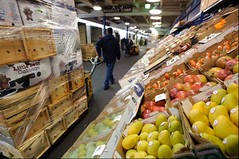
with
a special focus on creating food-related jobs in and outside the City
and addressing the pernicious problem of food equity. This effort is
aided by our long history of collaboration with government agencies in
the City as well as our decades-long work to protect rural land in the
nearby Catskills Mountains, where farming provides a critical food
resource in the region.
In particular, our New York-based food work focuses on three key related efforts:
- Modernization of Hunts Point Food Distribution Center.
Virtually every local food stakeholder in the New York region agrees
that a major obstacle to increasing supply of local food is the lack of a
“wholesale farmers market” where small- and medium-sized growers can
sell directly to supermarkets and other food outlets. The best New York
City location at which to create such a facility is the massive Hunts
Point Food Market in the South Bronx, which is slated for
modernization. This facility is the largest produce market in the world
and supplies food to 22 million people within a 50-mile radius.
Unfortunately, only two percent of the produce sold at the market comes
from local farmers, despite strong retail interest in buying locally
grown food. To make matters especially complicated and sensitive, the
Market sits adjacent to one of the most impoverished neighborhoods in
the nation, where residents are exposed to serious air pollution from
more than 70,000 vehicles, including diesel trucks, entering the area
every day.
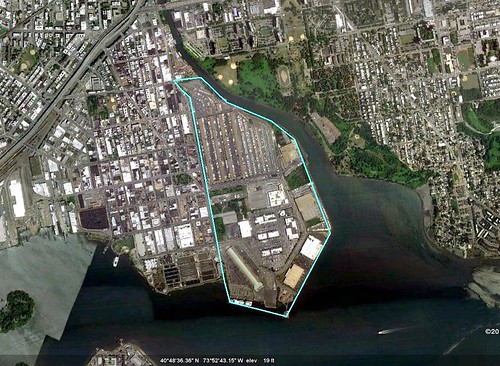
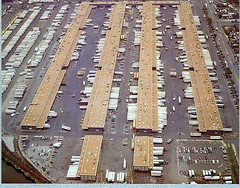
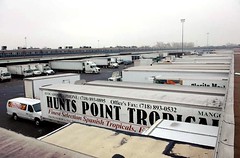
NRDC will work with City and neighborhood partners to help ensure a
range of environmental and community benefits from the modernization of
this 50-year-old facility, including the inclusion of a wholesale
farmers market at Hunts Point; greater community access to fresh, local
food flowing through the facility; new jobs for local South Bronx
residents at the Market; and reduced transportation and air quality
impacts in the community.
- Catskills-New York City food initiative. At the
regional scale, we will work with conservation and community partners in
the Catskill Mountains to help strengthen the economic base and market
for local, sustainably-grown Catskills food. While improving the
sustainability of the regional food supply, we hope also to improve
economic opportunities for farmers as an alternative to less sustainable
development options, such as natural gas drilling or large-scale
development projects, in this sensitive area.
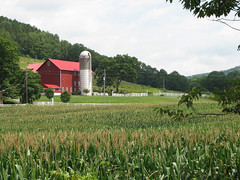
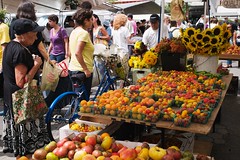
- New York City food purchasing.
The third prong of this effort seeks to leverage the enormous purchasing
power of New York City and State government to boost demand for local,
healthy food from the Catskills, Long Island, New Jersey, and other
nearby areas. The New York City school system alone serves daily meals
at 1200 locations, and various policy options
that begin to address the sustainability of local government food
procurement are already being considered by the City Council. NRDC
believes it critical that emerging law and policy emphasize local,
healthy food sources, especially because the models adopted in New York
are likely to be influential as other regions consider the issue.
For a good overview of issues related to the sustainability of New York City’s food supply, see
this 2010 report from Columbia University.
Sustainable urban water systems
Another of the most pressing environmental challenges facing cities
and suburbs in the United States is the impact of stormwater runoff from
developed land – highways, parking lots, rooftops and other impermeable
surfaces – as a significant source of coastal, freshwater and Great
Lakes pollution. The federal EPA estimates that more than 10 trillion
gallons of untreated urban and suburban stormwater runoff makes its way
into our surface waters each year. In many communities, polluted urban
and suburban runoff is the major source of water quality impairment -
degrading recreation, destroying fish habitat, and altering stream
ecology and hydrology.
Smart growth – developing in more compact patterns – helps, because
it reduces the spread of new pavement into previously undeveloped
areas. But it is not enough, because we need waterways near our
existing developed areas to become cleaner and safer. Many cities and
suburbs are now undergoing more intensive development, in part to
address other environmental concerns such as transportation efficiency
and land conservation. If the development does not proceed in a manner
that accounts for the potential of runoff, some waterways could become
even more polluted.

The good news is that these problems can be addressed with
green infrastructure,
which prevents rainwater from running off in the first place. Green
infrastructure (also known as low impact development) is a set of urban
design techniques that replicate the way nature deals with rainwater –
using vegetation and soils as natural sponges for runoff – rather than
relying exclusively on the concrete pipes and holding tanks of the past.
Green infrastructure techniques such as green roofs, roadside
plantings, rain gardens, and rainwater harvesting not only improve water
quality; they also transform rainwater from a source of pollution into a
valuable community resource. Done well, low impact development helps
to literally green the urban landscape, cool and cleanse the air, reduce
asthma and heat-related illnesses, cut heating and cooling energy
costs, create urban oases of open space, and generate green landscaping
and construction jobs. NRDC is working in Philadelphia and Chicago to
make these practices the norm rather than the exception.
- Philadelphia. In Philadelphia, we
have been helping the city develop and implement a first-of-its-kind,
20-year plan for more than $1 billion of green infrastructure
investments. Through a combination of incentives to private property
owners, requirements for new buildings, and public investments to
retrofit city streets, parks, and other public property, Philadelphia
aims to deploy the most comprehensive network of stormwater green
infrastructure found in any U.S. city.
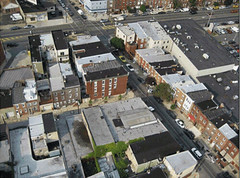
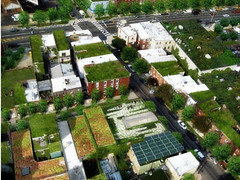
In particular, we have been providing assistance to the Philadelphia
Water Department, as well as state and federal environmental agencies
that oversee the city’s clean water programs, on how these methods can
be used to meet the city’s federal Clean Water Act obligations. Under a
formal plan approved in June of this year, Philadelphia has now agreed
to transform at least one-third of the impervious areas served by its
sewer system into “greened acres” -- spaces that use green
infrastructure to infiltrate, or otherwise collect, the first inch of
runoff from any storm. That amounts to keeping 80-90% of annual
rainfall from these areas out of the city’s over-burdened sewer
system.
Still, many challenges lie ahead, especially for the city’s Water
Department, which bears primary responsibility for implementing this
visionary program. The plan’s long-term success will hinge on active
participation by community organizations, businesses, private property
owners, and, especially, a wide range of other city agencies. (For a
great summary of what’s going on in Philadelphia, and NRDC’s
involvement, see this post from my colleague Larry Levine.)
- Chicago. Beyond Philadelphia, NRDC’s
Chicago-based Midwest Office is advocating a comprehensive redesign of
Chicago’s waterway system in order to address multiple community issues
related to outmoded infrastructure, including urgent threats to the
Great Lakes from invasive species. In particular, we are pursuing major
investments – including green infrastructure on a large scale – in the
city’s transportation, water and sewer infrastructure in order to move
toward more sustainable movement of goods, water quality improvements
from green infrastructure, and increased recreational opportunities for
underserved neighborhoods.
Sustainable urban and regional transportation systems
NRDC’s communities team in Southern California is focused on
transportation. Southern Californians are notorious for addiction to
their cars, and for decades Los Angeles’ substandard public
transportation system has failed to cure that addiction. Although the
region is notorious for its clogged highways, building and widening
roads is not a sustainable solution: history and
a growing body of research
teach that building more highway lanes only promotes more vehicle use,
resulting in still more congestion, carbon emissions and air pollution.
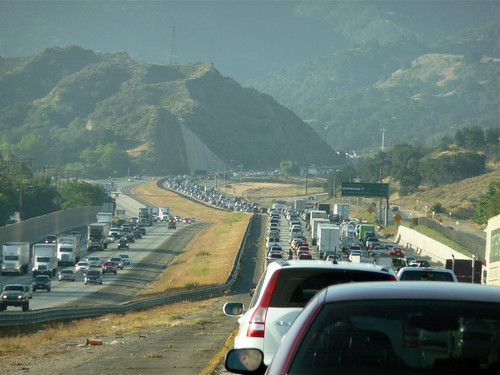
But today, at last, the city of Los Angeles has a new commitment to
substantial expansion of both rail and bus transit. We believe there is
renewed opportunity to make the region’s patterns of getting around
more sustainable, while also revitalizing key neighborhoods around
transit.
In collaboration with NRDC staff working on California’s state planning law, SB 375 (discussed in my
previous post on regional planning),
our staff in Los Angeles is targeting local, site-specific projects
that will reduce greenhouse gas emissions and increase investment in
public transportation, infrastructure for walking and bicycling, and
smart growth planning. We are placing a special focus on advocating for
equitable transportation services, and on developing models of
transit-oriented revitalization of distressed neighborhoods in the
city’s underrepresented areas. For the latter, we are working with
community groups to ensure that new development brings the benefits of
neighborhood renewal without gentrification.
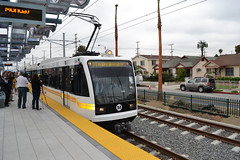
We
are also working to apply a recent court decision under the federal
Clean Air Act (NRDC served as counsel in the case) that will require the
region to reduce smog-forming pollution in an amount equivalent to
taking a quarter of the Los Angeles region’s passenger vehicles off the
road. We are identifying measures to meet this mandate, including
promotion of non-auto infrastructure, public transit investments
(including bus-only lanes), bicycling infrastructure, and efficient land
use development. We are also working on criteria for transit-oriented
development that will protect the health of residents moving into new
communities built near highways.
At the same time that we are working to establish model practices for
sustainable transportation at the local level, NRDC has been seeking to
help reform federal transportation policy through a campaign built on a
sophisticated program of concerted partnership, analysis, advocacy, and
education.
Unfortunately, a flagging economy and general partisan
gridlock has dampened the immediate prospects for passing a reformed
federal transportation bill. Looking ahead, it is likely that these
circumstances will yield a future legislative and political landscape
that will continue to be challenging.
It will remain essential that we and our partners work to protect our
air, water and communities in any federal transportation that does move
in Congress. We will also work with partners to strengthen the base
for future reform at the federal level while seizing opportunities to
make progress at the state and local levels.
________________
We know that these are not the only issues facing our communities.
NRDC is just one organization with limited resources, and these are not
even the only issues NRDC is addressing: we have staff active in
pursuing sustainable solutions to urban waste, developing better city
parks, and retrofitting buildings for energy efficiency, for example.
But we choose, for now, to emphasize these three because we see
opportunity to work with partners to establish replicable models, while
taking advantage of specific expertise that we have in-house in key
locations. Combined with our work to develop models for neighborhood
revitalization and sustainability, and sustainable regional planning, we
hope that we and other fellow travelers can work together to make a
difference for the places where Americans live, work, go to school, and
play.










 with
a special focus on creating food-related jobs in and outside the City
and addressing the pernicious problem of food equity. This effort is
aided by our long history of collaboration with government agencies in
the City as well as our decades-long work to protect rural land in the
nearby Catskills Mountains, where farming provides a critical food
resource in the region.
with
a special focus on creating food-related jobs in and outside the City
and addressing the pernicious problem of food equity. This effort is
aided by our long history of collaboration with government agencies in
the City as well as our decades-long work to protect rural land in the
nearby Catskills Mountains, where farming provides a critical food
resource in the region.








 We
are also working to apply a recent court decision under the federal
Clean Air Act (NRDC served as counsel in the case) that will require the
region to reduce smog-forming pollution in an amount equivalent to
taking a quarter of the Los Angeles region’s passenger vehicles off the
road. We are identifying measures to meet this mandate, including
promotion of non-auto infrastructure, public transit investments
(including bus-only lanes), bicycling infrastructure, and efficient land
use development. We are also working on criteria for transit-oriented
development that will protect the health of residents moving into new
communities built near highways.
We
are also working to apply a recent court decision under the federal
Clean Air Act (NRDC served as counsel in the case) that will require the
region to reduce smog-forming pollution in an amount equivalent to
taking a quarter of the Los Angeles region’s passenger vehicles off the
road. We are identifying measures to meet this mandate, including
promotion of non-auto infrastructure, public transit investments
(including bus-only lanes), bicycling infrastructure, and efficient land
use development. We are also working on criteria for transit-oriented
development that will protect the health of residents moving into new
communities built near highways.